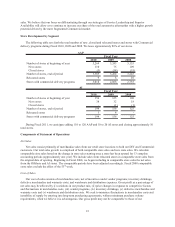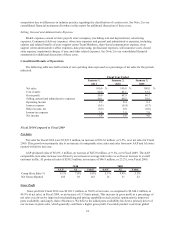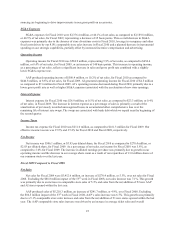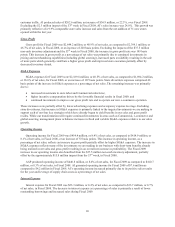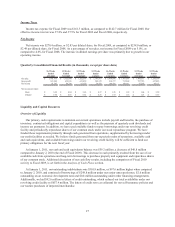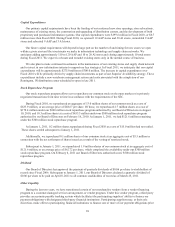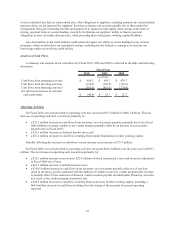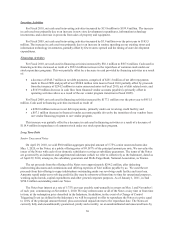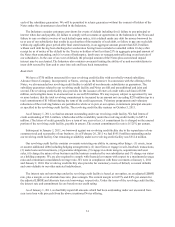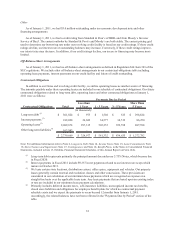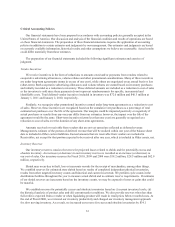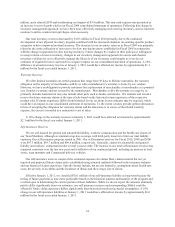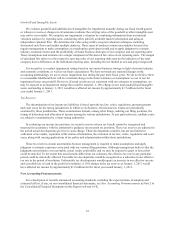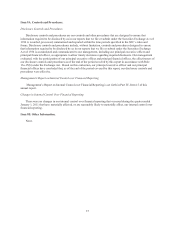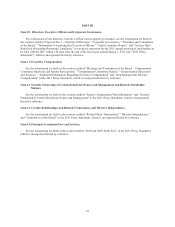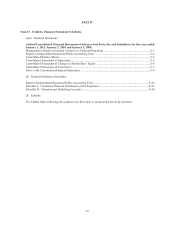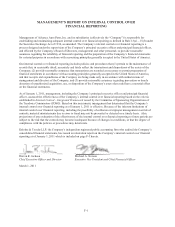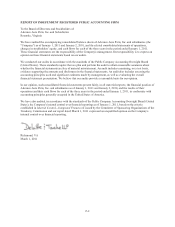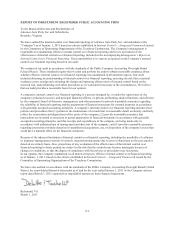Advance Auto Parts 2010 Annual Report Download - page 48
Download and view the complete annual report
Please find page 48 of the 2010 Advance Auto Parts annual report below. You can navigate through the pages in the report by either clicking on the pages listed below, or by using the keyword search tool below to find specific information within the annual report.33
Critical Accounting Policies
Our financial statements have been prepared in accordance with accounting policies generally accepted in the
United States of America. Our discussion and analysis of the financial condition and results of operations are based
on these financial statements. The preparation of these financial statements requires the application of accounting
policies in addition to certain estimates and judgments by our management. Our estimates and judgments are based
on currently available information, historical results and other assumptions we believe are reasonable. Actual results
could differ materially from these estimates.
The preparation of our financial statements included the following significant estimates and exercise of
judgment.
Vendor Incentives
We receive incentives in the form of reductions to amounts owed and/or payments from vendors related to
cooperative advertising allowances, volume rebates and other promotional considerations. Many of these incentives
are under long-term agreements (terms in excess of one year), while others are negotiated on an annual basis or less
(short-term). Both cooperative advertising allowances and volume rebates are earned based on inventory purchases
and initially recorded as a reduction to inventory. These deferred amounts are included as a reduction to cost of sales
as the inventory is sold since these payments do not represent reimbursements for specific, incremental and
identifiable costs. Total deferred vendor incentives included in inventory was $72.0 million and $46.3 million at
January 1, 2011 and January 2, 2010, respectively.
Similarly, we recognize other promotional incentives earned under long-term agreements as a reduction to cost
of sales. However, these incentives are recognized based on the cumulative net purchases as a percentage of total
estimated net purchases over the life of the agreement. Our margins could be impacted positively or negatively if
actual purchases or results from any one year differ from our estimates; however, the impact over the life of the
agreement would be the same. Short-term incentives (terms less than one year) are generally recognized as a
reduction to cost of sales over the duration of any short-term agreements.
Amounts received or receivable from vendors that are not yet earned are reflected as deferred revenue.
Management's estimate of the portion of deferred revenue that will be realized within one year of the balance sheet
date is included in Other current liabilities. Earned amounts that are receivable from vendors are included in
Receivables, net except for that portion expected to be received after one year, which is included in Other assets, net.
Inventory Reserves
Our inventory reserves consist of reserves for projected losses related to shrink and for potentially excess and
obsolete inventory. An increase (or decrease) to our inventory reserves is recorded as an increase (or decrease) to
our cost of sales. Our inventory reserves for Fiscal 2010, 2009 and 2008 were $18.2 million, $28.5 million and $62.9
million, respectively.
Shrink may occur due to theft, loss or inaccurate records for the receipt of merchandise, among other things.
We establish reserves for estimated store shrink based on results of completed independent physical inventories,
results from other targeted inventory counts and historical and current loss trends. We perform cycle counts in the
distribution facilities throughout the year to measure actual shrink and to estimate reserve requirements. If estimates
of our shrink reserves are inaccurate based on the inventory counts, we may be exposed to losses or gains that could
be material.
We establish reserves for potentially excess and obsolete inventories based on (i) current inventory levels, (ii)
the historical analysis of product sales and (iii) current market conditions. We also provide reserves when less than
full credit is expected from a vendor or when liquidating product will result in retail prices below recorded costs. At
the end of Fiscal 2008, we reviewed our inventory productivity and changed our inventory management approach
for slow moving inventory. As a result, we increased our reserve for excess and obsolete inventories by $34.1


